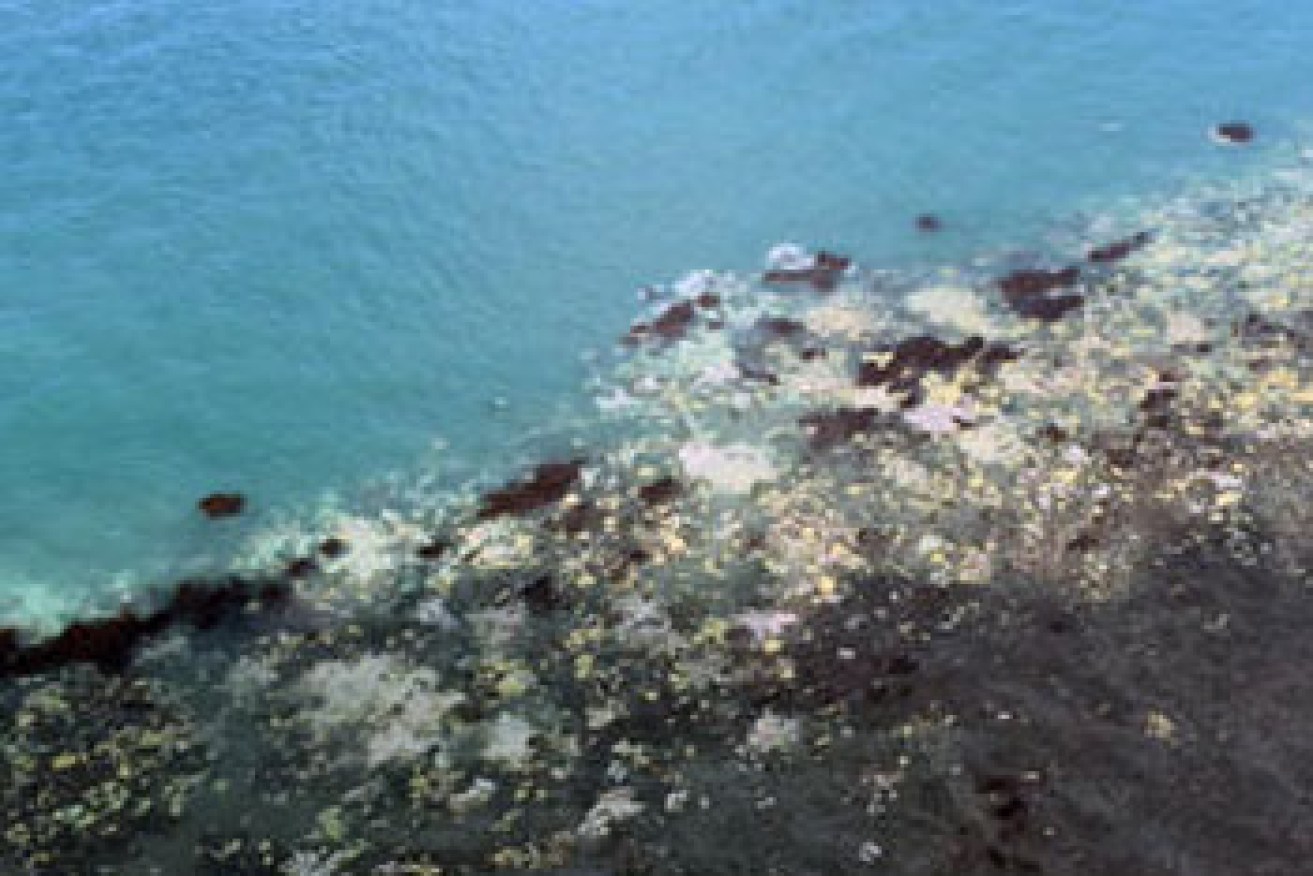‘It’s like 10 cyclones have come ashore all at once’


ARC Centre of Excellence for Coral Reef Studies
Extensive surveys have revealed that 93 per cent of Great Barrier Reef coral has bleached – described as the worst such bleaching event in history.
The National Coral Bleaching Taskforce announced on Wednesday the results of surveys by helicopters, light planes and divers of 911 individual reefs along the full 2300-kilometre length of the Great Barrier Reef.
Taskforce convenor Professor Terry Hughes said he had “never seen anything like this scale of bleaching before”.
• Barrier Reef coral bleaching a ‘significant’ concern
• Great Barrier Reef coral bleaching threat increased
• Coral bleaching in Qld is the ‘worst in 15 years’
“In the northern Great Barrier Reef, it’s like 10 cyclones have come ashore all at once,” Professor Hughes said in a statement.
Coral bleaching occurs when abnormal environmental conditions, such as increased sea temperatures, cause the corals to expel the photosynthetic algae (called zooxanthellae) that give the corals their vibrant colour, turning the corals white.

The worst affected sector is to the north. Photo: National Coral Bleaching Taskforce
Bleached corals can recover if the environmental conditions return to normal and the zooxanthellae can recolonise them. But if abnormal conditions persist, there is a heightened risk of the corals dying.
Scientists will have to wait for temperatures to drop in the winter period to determine the mortality rate, but some have predicted that as much as 90 per cent of corals will die in the most severely bleached reefs.
The causes of this bleaching event were increased global ocean temperatures due to climate change, coupled with the current El Niño event pushing warmer waters into the western Pacific Ocean north of Australia, according to Australian scientists.
The final results of the surveys indicated the most severely bleached corals were almost all in the northern half of the Reef, whereas the southern reaches showed signs of minor to moderate bleaching that should soon recover.
Professor Andrew Baird, who recently launched the Coral Trait Database to map global coral observations, said the rate of mortality could be as high as 50 per cent in more remote areas of the reef.
“North of Port Douglas, we’re already measuring an average of close to 50 per cent mortality of bleached corals,” Professor Baird said in a statement.
“At some reefs, the final death toll is likely to exceed 90 per cent. When bleaching is this severe it affects almost all coral species, including old, slow-growing corals that once lost will take decades or longer to return.”
University of Technology Sydney coral bleaching expert Professor Peter Ralph warned that future bleaching events will occur much closer together.
“If global temperatures continue to rise and El Niños are superimposed on top of that, the frequency and severity of bleaching events will be greater,” Professor Ralph told The New Daily.

‘Ninety per cent of some reefs will die’. Photo: National Coral Bleaching Taskforce
“If we didn’t have anthropogenic warming and the El Niño happened, we would have elevated temperatures, but bringing the two of them together triggers the bleaching quicker.”
This means the coral reefs will not have sufficient time to recover from the current bleaching event before the next one hits, Professor Ralph said.
“They’re diminished in their resilience and that’s where if we have another bleaching year next year, something that has bleached and recovered … will be much less resilient to that second bleaching.”
Taskforce researchers from the University of Western Australia also documented extensive bleaching of corals off the west coast of Australia
“The coastal area that I study north of Broome has huge tides, and we thought the corals there are tough ‘super corals’ because they can normally cope with big swings in temperature,” Dr Verena Schoepf said in a statement.
“So, we’re shocked to see up to 80 per cent of them now turning snow-white. Even the tougher species are badly affected.”








